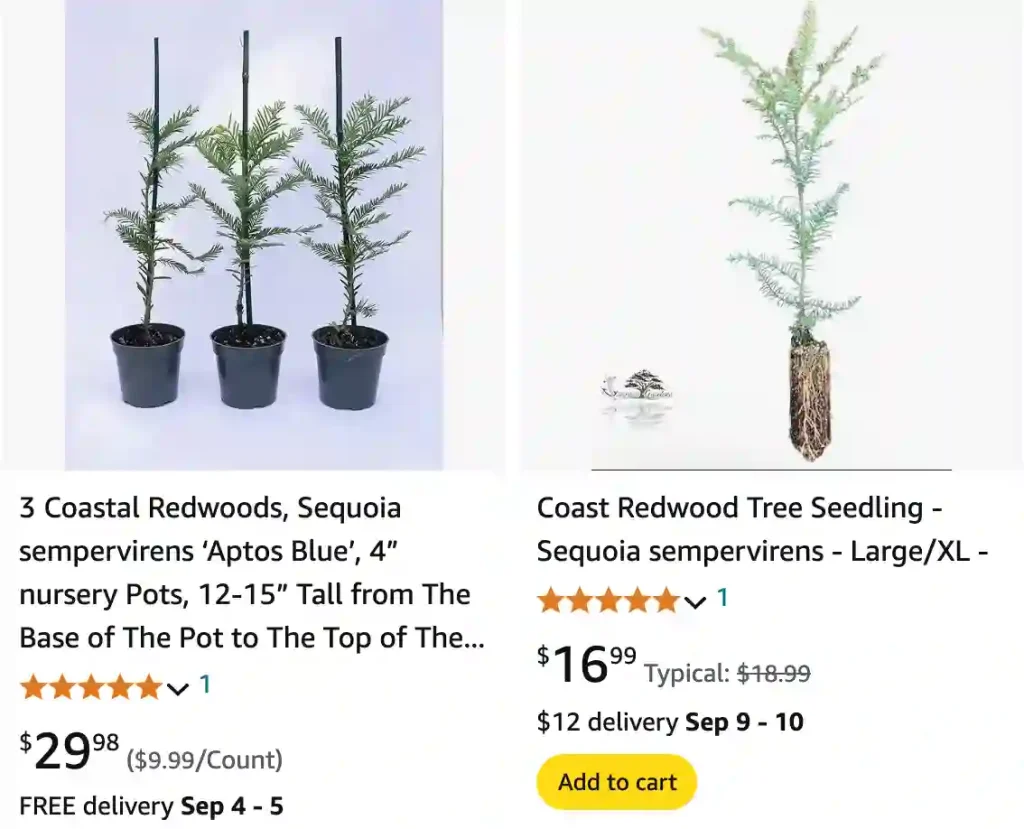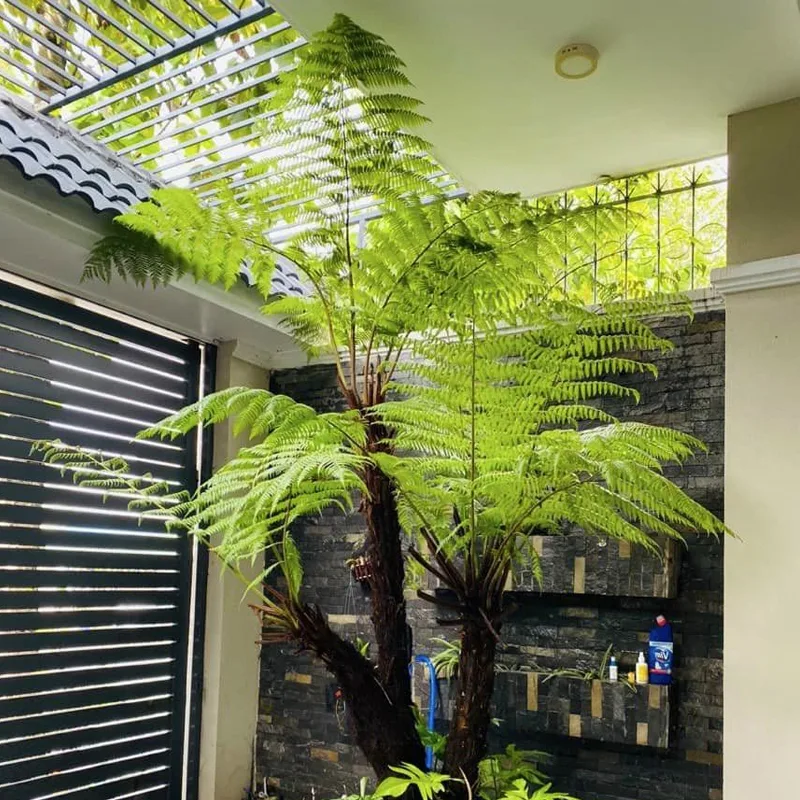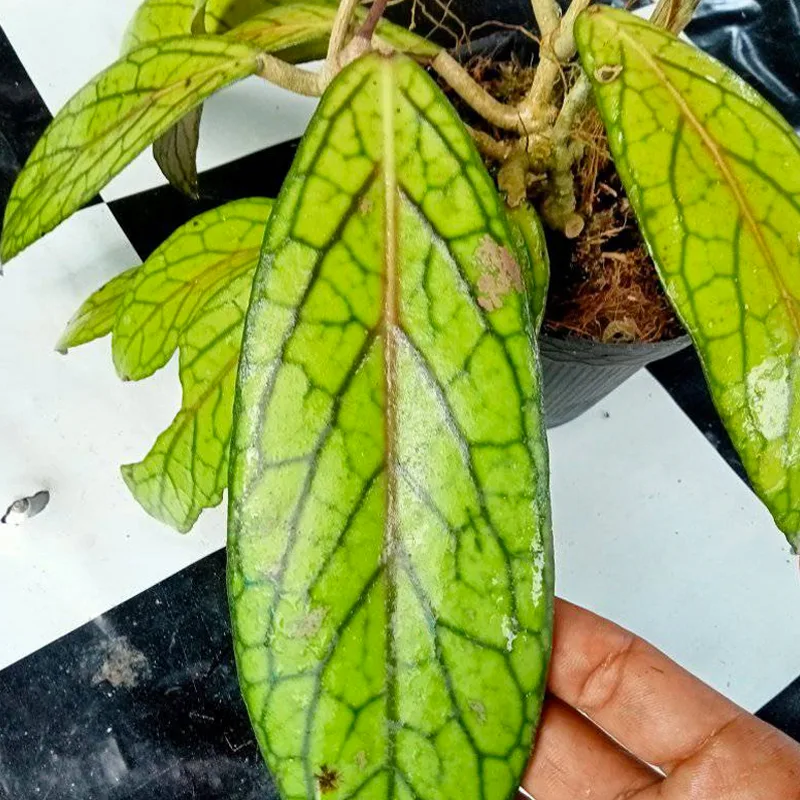
FAQs About Sequoia Sempervirens
As an avid gardener and nature enthusiast, I’ve often found myself deep in the woods of Sequoia Sempervirens, also known as the Coast Redwood. This towering giant is a marvel of nature, and over the years, I’ve gathered answers to some of the most frequently asked questions about these majestic trees. If you’re as fascinated by Sequoia Sempervirens as I am, here’s a comprehensive guide to everything you need to know.
2 Species in Genus Sequoia
Are There Redwood Sequoia Sempervirens Trees in British Columbia?
In short, no. Sequoia Sempervirens, or the Coast Redwood, is native to the coastal regions of northern California and southern Oregon. Their natural range doesn’t extend into British Columbia. The cooler, more humid climate of these coastal areas is crucial for their growth, so if you’re in British Columbia, you’d need to create a very specific environment to support these trees.
Do Sequoia Sempervirens Grow in Coos County, Oregon?
Yes, they do! Coos County, located on the southern coast of Oregon, falls within the natural range of the Coast Redwood. The moist, temperate climate of this region is ideal for these trees, allowing them to thrive. If you’re in Coos County, you might even find some stunning groves of Sequoia Sempervirens in the local forests.
How Do You Pronounce Sequoia Sempervirens?
The pronunciation of Sequoia Sempervirens can be a bit tricky. It’s pronounced as “seh-KWOY-uh SEM-per-VYE-renz.” Breaking it down: “Sequoia” starts with a soft “s” sound, followed by “KWOY-uh,” and “Sempervirens” is pronounced with emphasis on the “VYE.”
How Fast Do Sequoia Sempervirens Grow?
Sequoia Sempervirens are renowned for their rapid growth. Under optimal conditions, these trees can grow 2 to 3 feet per year. They’re among the fastest-growing conifers in the world, particularly when young. This rapid growth is one reason why they can reach impressive heights of over 300 feet in their lifetime.
How to Germinate Sequoia Sempervirens Seeds?
Germinating Sequoia Sempervirens seeds requires patience and a bit of technique. Here’s a step-by-step guide:
- Stratification: Start by stratifying the seeds. Place them in a moist, sand-soil mix and refrigerate for about 30 days to mimic winter conditions.
- Sowing: After stratification, sow the seeds in a seed tray or pot filled with a well-draining mix. Lightly cover them with soil.
- Watering: Keep the soil consistently moist but not waterlogged.
- Light and Temperature: Place the tray in a bright, warm location with indirect sunlight. A temperature range of 60-70°F works best.
- Transplanting: Once seedlings are large enough to handle, transplant them into larger pots or directly into the ground if conditions are suitable.
How to Prune a Sequoia Sempervirens?
Pruning Sequoia Sempervirens is generally minimal, as these trees naturally maintain their shape. However, if you need to prune:
- Timing: Prune during late winter or early spring when the tree is dormant.
- Technique: Remove any dead or diseased branches. Avoid cutting back healthy branches, as this can affect the tree’s growth.
- Tools: Use clean, sharp pruning shears or a saw for larger branches.
Is Sequoia Sempervirens a Dicot?
No, Sequoia Sempervirens is not a dicot. It is a gymnosperm, which means it has needle-like leaves and produces cones instead of flowers. Gymnosperms are a separate group from dicots, which are flowering plants with two seed leaves.
Is There a Difference Between Sequoia Sempervirens and California Redwood?
The term “California Redwood” typically refers to Sequoia Sempervirens. However, it’s important to note that there is another species, Sequoiadendron Giganteum, also known as the Giant Sequoia, which is sometimes confused with the Coast Redwood. While both species are called redwoods and share some similarities, they are distinct. Sequoia Sempervirens is found along the coast, while Sequoiadendron Giganteum is found inland in the Sierra Nevada mountains.
What Is the Mature Size of Sequoia Sempervirens?
Sequoia Sempervirens is the tallest tree species in the world. Mature trees can reach heights of over 300 feet, with some exceptional specimens exceeding 350 feet. Their trunk diameter can also be impressive, often exceeding 20 feet.
What Is the USDA Zone of Sequoia Sempervirens?
Sequoia Sempervirens generally thrives in USDA zones 7 to 10. They require a temperate climate with ample moisture, so ensure that your growing area meets these conditions if you plan to cultivate them.
Sequoia Sempervirens vs. Sequoiadendron Giganteum
When comparing Sequoia Sempervirens and Sequoiadendron Giganteum, the key differences are their natural habitats and physical characteristics. Sequoia Sempervirens (Coast Redwood) grows in coastal regions with a more slender, taller form, while Sequoiadendron Giganteum (Giant Sequoia) is found inland, characterized by a bulkier, shorter, and more massive trunk. Both are magnificent in their own right, but they have adapted to different environments and exhibit distinct growth patterns.
What to Plant With Sequoia Sempervirens?
When planting Sequoia Sempervirens, consider companions that thrive in similar conditions. Plants like sword ferns, Oregon grape, and salal can complement the lush, forested environment. Avoid plants that require drier conditions or full sun exposure, as they may not fare well in the moist, shaded habitat preferred by Coast Redwoods.
Can You Grow Sequoia Sempervirens Indoors?
Growing Sequoia Sempervirens indoors is challenging due to their size and specific environmental needs. They require ample space, high humidity, and a cool environment to mimic their natural habitat. If you’re looking for a tree to grow indoors, smaller species or dwarf varieties might be more practical.
Is Sequoia Sempervirens Toxic?
No, Sequoia Sempervirens is not toxic to humans or pets. They are safe to have around children and animals. However, it’s always a good practice to avoid ingesting any plant material and ensure that pets do not chew on plants.
Benefits of Sequoia Sempervirens
Sequoia Sempervirens offers numerous benefits. Their towering presence adds dramatic beauty to landscapes and they play a crucial role in forest ecosystems. They provide habitat for wildlife, contribute to carbon sequestration, and their sheer size and age can be a source of inspiration and wonder.
Common Problems with Sequoia Sempervirens
Despite their robustness, Sequoia Sempervirens can face issues like fungal infections, pest infestations, and root rot, particularly in poorly drained soils. Regular monitoring and proper care can help mitigate these problems and ensure healthy growth.
In conclusion, Sequoia Sempervirens is a remarkable tree species with unique characteristics and requirements. Whether you’re considering growing one or simply admiring them in their natural habitat, understanding these FAQs can help you appreciate the grandeur of these ancient giants even more.
If i die, water my plants!


